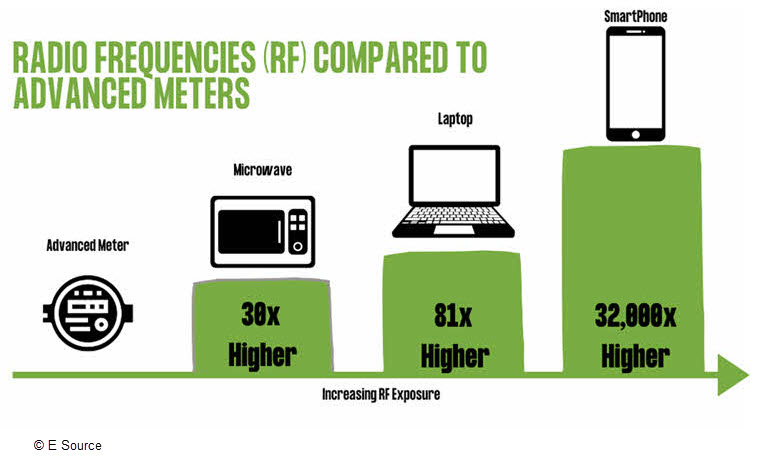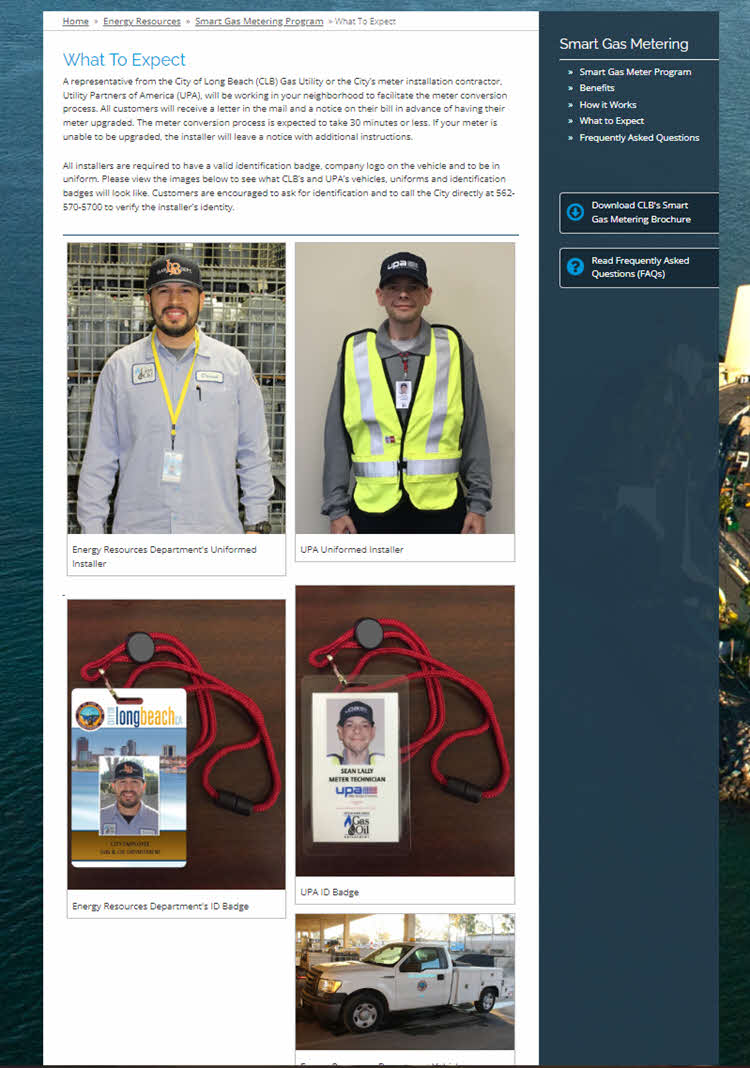Leading with the benefits is a tried-and-true strategy when communicating with customers about a major undertaking like an advanced metering infrastructure (AMI) implementation.
Communicating the benefits helps form staff ambassadors and gain customer support. But it’s important to understand that along with the realization of the AMI program’s benefits come public misconceptions.
These concerns are major risks to the success of the program if they remain unaddressed.
Utilities often encounter misconceptions regarding AMI technology’s impact on customers and their energy, water, and gas bills during an AMI implementation.
It’s important to conduct a thorough research effort before developing key messaging themes and communications. An educational effort should follow to ensure that internal stakeholders truly understand and are prepared to address the relevant public concerns. This proactive approach to AMI program communications will allow your utility to manage and possibly resolve these concerns.
E Source Technology Planning and Implementation Consulting has designed and executed more than 40 customer engagement and awareness campaigns as part of our AMI implementation program management offering. We’ve gathered five of the most frequently encountered areas of concern along with some communication strategies to resolve them.
Concern: RF emissions
Misinformation on health side effects has been one of the most common concerns since AMI implementations began in the early 2000s.
Most advanced meters include radios that wirelessly communicate usage data to the utility for billing and operational purposes. Although many studies have indicated that the radio frequency (RF) emissions from advanced meters are far lower than the emissions from many other commonly used electronic devices, concerns persist in some communities.
Strategy: Help customers understand the communication technology
Debunk myths about RF emissions with an awareness campaign. This is a great opportunity to educate stakeholders on the communication technology your AMI implementation uses. Here are a few ways to do this.
Create an FAQ document. Use the FAQ to explain how RF exposure from an advanced meter is well below nationally established limits, which cites nonutility sources (the US Environmental Protection Agency, Federal Communications Commission, and other federal agencies). Post the FAQ online and use it as a reference for customer-facing personnel. This approach brings third-party expertise to bear, builds confidence, and often suffices for customers who raise concerns.
Create a fact sheet. To provide even more information for still-hesitant customers, develop a fact sheet that includes details such as duty cycle (the meter transmitting intermittently in cycles a few times a day) or distance (RF exposure decreases 100 times for every 10 feet between a person and the meter). Another recommendation is to include a graphic comparing RF exposure from an advanced meter to that of other devices found in customers’ homes (figure 1).
Figure 1: How does the RF exposure from an advanced meter compare?
Provide educational demonstrations. Show, don’t tell! Use an electromagnetic radiation (EMF) meter to do in-person demonstrations. This allows customers to see the measurable difference between the energy output from their advanced meter and that from other common devices.
Concern: Personal privacy and data security
In our current digital age, the issue of personal privacy and data security often comes up. Some members of the public believe service providers can use advanced meters to spy on customers, monitor their usage (for purposes other than billing and operations), or share their information with third parties.
Strategy: Reassure customers about data privacy regulations in place to protect them
We know all three of these assumptions are incorrect, but some customers don’t. They need to be reassured that, while utilities will have access to more-granular usage information, staff won’t be able to discern which appliances are being used or for what purpose.
Additionally, utilities have handled sensitive customer data for many years and must comply with data privacy regulations. Offering understanding, reassurance, and compliance references will typically address concerns for most customers. Here are a few ways to do that:
- State that advanced meter data will be used primarily for billing and system operations and enhancements. Reassure customers that the meter data indicates volume of usage only. No personal identifiable information is stored in the meters or communicated across the network.
- Mention that all aspects of security for the AMI system adhere to the latest industry standards. Explain which security techniques your utility uses, such as two-factor authentication, 256-bit encryption, and role-based permissions.
- Update or defer to your utility’s current privacy statement to support the protection of all customer information.
- Show in program communications that any future customer programs are strictly voluntary.
We recently helped the City of Greensboro, North Carolina, address concerns for privacy and cybersecurity with a GSO WaterWise FAQs page.
Concern: Cost
Cost is typically one of the more challenging concerns to address during an AMI program. In fact, some utilities have experienced customer complaints and negative press regarding price increases associated with AMI implementations. So it’s imperative that utilities and their governing bodies are prepared to address customer inquiries regarding program financing, higher bills, and rate increases.
Strategy: Be transparent about the financial aspects of AMI
To address customer concerns about cost, develop messaging around the financial expectations and impacts of AMI. We recommend doing one or more of the following:
- Provide a high-level overview of the plans to fund the program (for example, capital improvement funds or low-interest/no-cost grant funding).
- Decouple the AMI deployment from rate increases or other actions that would be highly visible to customers and foster negative reactions.
- Acknowledge that bills may reflect the improved accuracy of the new meter compared to the outdated meter. Take this opportunity to encourage customers to use an online customer portal (if available) to manage their usage and cut costs.
We worked with Winston-Salem/Forsyth County Utilities (WSFC) to create language for its WaterSavvy FAQs page. It addresses popular customer questions like, Will my water bill increase?
WSFC Utilities is implementing this technology to improve operations and become more cost-efficient in the long term. Various factors will always affect customer billing (e.g. customer-side leaks, meter accuracy, irregular usage, weather, etc.). Due to the age of the old meters, the upgraded meters are likely to measure your water usage more accurately. All of the new meters will be tested before installation to make sure that they register properly. After the launch of MyWaterSavvy, customers will have 24-7 access to an online portal where you can verify your usage and use other features (e.g. push notifications and conservation tips) to make more informed water usage decisions. These upgraded meters will be able to provide increased information and awareness to ensure a better overall experience for both WSFC Utilities and our customers alike.
Concern: Installation safety and accuracy
With the rise of impersonation scams, customers may be sensitive to an installation contractor visiting or entering their property. Customers may also have concerns about the quality of their meter installation.
Strategy: Document processes and follow local guidelines to keep customers safe during installations
Whether you plan to enlist a third-party installation contractor or use in-house staff to install meters, it’s important to make sure that customers and local authorities are aware of an AMI deployment and understand what to expect during the installation process. Here are a few steps to take:
- Prepare utility management and government officials to address all safety standards and processes that will be followed (for example, COVID-related social-distancing procedures).
- Add installation details to the program web page, including the process, how to identify certified city contractors, and who to contact with questions.
- Work with the installation crew to make sure that workflows, records, photos, and audit trails are all up to spec during the installation process. Doing so enables you to proactively address customer concerns about physical property damage or issues related to installation.
To ensure customer safety, our client, the City of Long Beach, California, included pictures of installers in their uniforms, their identification badges, and their vehicles on its What To Expect page (figure 2).
Figure 2: What to expect from a visit from the City of Long Beach Gas Utility
Concern: Lost jobs
In our experience, concerns regarding personnel allocation during an AMI deployment often arise from internal and external stakeholders alike.
The great news is that to successfully support an AMI program over the long term, you need adequate staffing. So your utility will need to create new roles and responsibilities to reap the full value of AMI. AMI deployments may result in a transition of existing staff to fill new and vacant roles.
Strategy: Develop a thorough staffing plan and review it with personnel
It’s important to proactively develop a staffing plan to alleviate concerns among personnel and the community. Next, talk to affected team members directly to discuss the reallocation of personnel and any changes to previously established job duties and schedules. Once you’ve addressed internal stakeholders’ concerns, be sure to include encouraging and reassuring language in public communications.
For additional support and insight on AMI stakeholder communications, visit our AMI implementation web page.

